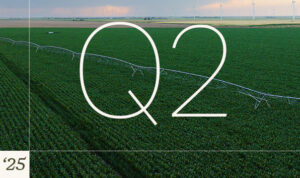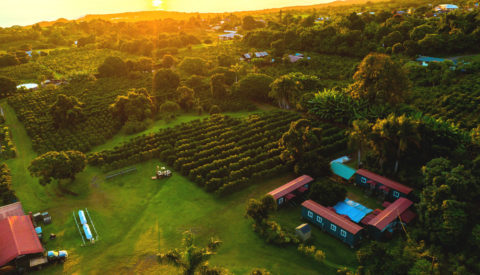This article originally appeared in Drovers, a Farm Journal publication, on August 27, 2025. “If you don’t measure it, you can’t manage it,” says Dave Weaber, referring to the importance of data and performance tracking in the beef industry. Weaber, Terrain senior animal protein analyst, was the featured guest in “The Future of Beef Show” podcast episode 11. Weaber has an optimistic yet cautious view of the beef industry’s future. Cattle prices have doubled compared to pre-2015 levels, with potential for continued growth, he explains. He emphasizes successful producers will be those who can adapt, manage costs effectively and align themselves with evolving market trends. “How do we make cattle more uniform from the cow-calf level all the way through the feedyard, so that more of them end up on the same rail, on the same shift, and they’re high-quality, low-variance, in terms of outliers. That’s where the money is,” he says. “That’s really the driver today, if you’re a cow-calf producer, this next three or four years is the time to figure out what, what part of the system you’re going to be part of, because when it turns over, the price spreads, I think, get really wide.” Four takeaways from Weaber’s discussion include: 1. Consumer beef spending has significantly increased, with $84 more per capita spent on beef compared to 2005-2015, driven by improved beef quality and consumer appreciation. According to Weaber, since COVID-19, beef spending has dramatically increased — outpacing pork and poultry combined. He attributes this growth to several factors: Improved beef quality: The industry has seen a substantial increase in Prime and Choice beef, with nearly 85% of heifers and 75% of steers now grading in these top categories. Changing consumer preferences: Younger generations are spending more on high-quality beef, both in restaurants and at home, driven by increased cooking skills and appreciation for beef’s flavor and quality. Health perception: Beef is now viewed more positively as a health product, with increased transparency and better communication from the industry. 2. Producers aren’t expanding. “The beef industry is not currently in herd expansion mode, with producers hesitant to retain heifers due to high costs and economic uncertainties,” he explains. Weaber adds producers need to be intentional about herd expansion, understanding the financial implications of adding new cattle. 3. Risk management is crucial for producers. “Risk management is crucial for producers, including developing comprehensive business plans, understanding cost structures and using tools like LRP, futures and options,” he says. According to Weaber, risk management is far more than just a financial strategy — it’s a holistic approach to business sustainability. Risk management is about protecting equity while maintaining operational flexibility. “Set aside $40 to $70 a head for risk management,” he says. “I don’t care how you do it, if you use LRP, futures, options, or a combination of it.” Weaber challenges producers to rethink their approach, asking the critical question: “How do I get less long? Every cattle producer is long in the market. How does he get less long and leave opportunity for the upside?” He summarizes risk management isn’t about eliminating all risk but strategically navigating market uncertainties. He encourages producers to: Remain adaptable Continuously educate themselves Invest in measurement and management tools Prepare for potential market shifts 4. The beef market is experiencing strong demand, with potential for continued high prices, but producers should prepare for potential market shifts and focus on low-cost, efficient production. Successful producers will be those who can adapt, manage costs effectively and align themselves with evolving market trends. “Don’t let cost get away from you,” Weaber says, emphasizing that “being a low-cost, high-productivity producer means you get to make money seven, eight or nine years of the cycle.” He stresses the importance of understanding financial implications, particularly during market transitions. “If we’re not working on the business, we can’t work in the business,” Weaber adds, summarizing his philosophy regarding producers’ need to adopt more strategic, data-driven approaches. Weaber warns, “We’re going to price some consumers out of our product. Let’s not make any mistakes about what’s coming. Most people say we need to double food production by 2050 — and that’s not right. Our consumer demographic is going to get smaller before it gets bigger.” In summary, these are Weaber’s five strategies to help producers succeed in today’s industry: Focus on low-cost production Invest in risk management tools Develop comprehensive business plans Understand individual animal performance Stay informed about market trends and consumer preferences
More Articles
See All InsightsFarmers should stay patient and disciplined. Patient for old crop: I expect continued price rallies for old-crop corn driven by export sales strength and tight global
“The best part of my day is waking up to a fresh cup of Kona coffee,” says Tom Greenwell, co-owner of Greenwell Farms. That cup of…
As we move into the second half of the year, farmers typically take stock of their equipment fleet and begin to plan for needed upgrades. Recent



